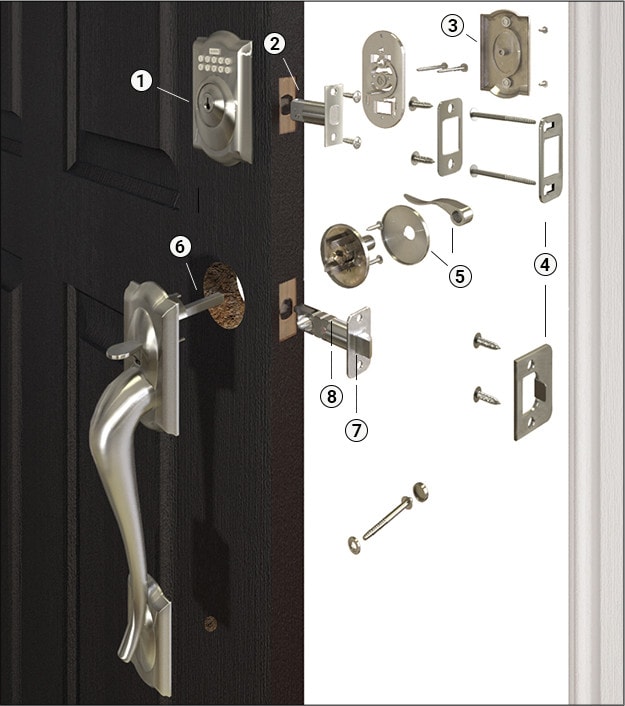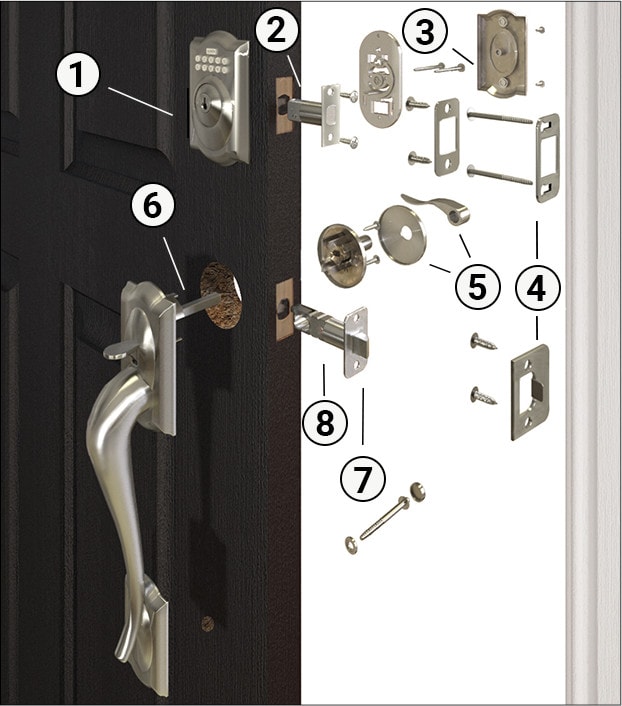Parts and features
Here are the main parts of a door lock and their different features.
1 - Cylinder and guard
The cylinder contains the lock mechanism. A strong metal shield, the cylinder guard, is fastened to the cylinder collar. Inserting and turning the key actuates the deadbolt. These are ideal when you are installing a handle and lockset on an exterior door.
Some lock manufacturers make systems that can be configured so the user can activate or deactivate the keys that can be used with the lock, without having to call a locksmith.
2 - Deadbolt
Solid cylindrical metal bar with a flat end, which locks the door by being projected into the strike. The bolt is actuated by the key or thumb turn.
3 - Thumb turn (or turn button)
Button that actuates the bolt from the inside, to lock or unlock the door.
4 - Strike plate
Metal plate with an opening, fastened over the hole in the door frame, which receives the bolt that closes and/or locks the door.
5 - Rose
Decorative plate surrounding the door handle.
6 - Axle
Metal rod that links the two parts of the doorknob and actuates the bolt when turned.
7 - Faceplate
Metal plate with an opening, fastened over the hole in the door edge, through which the bolt moves.
8 - Latch bolt
Solid cylindrical metal bar which holds the door closed when projected into the strike. The bolt is actuated by the doorknob or lever.





























